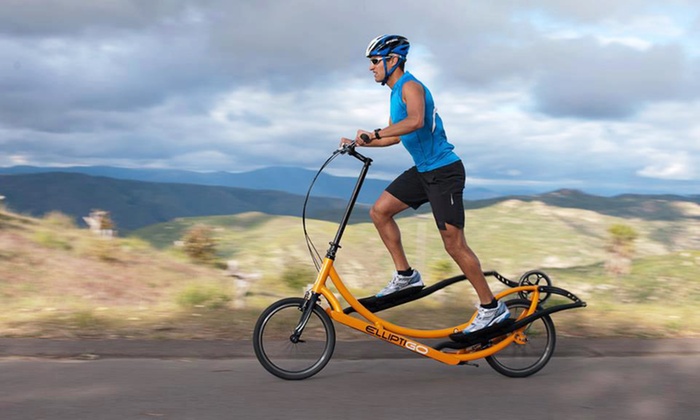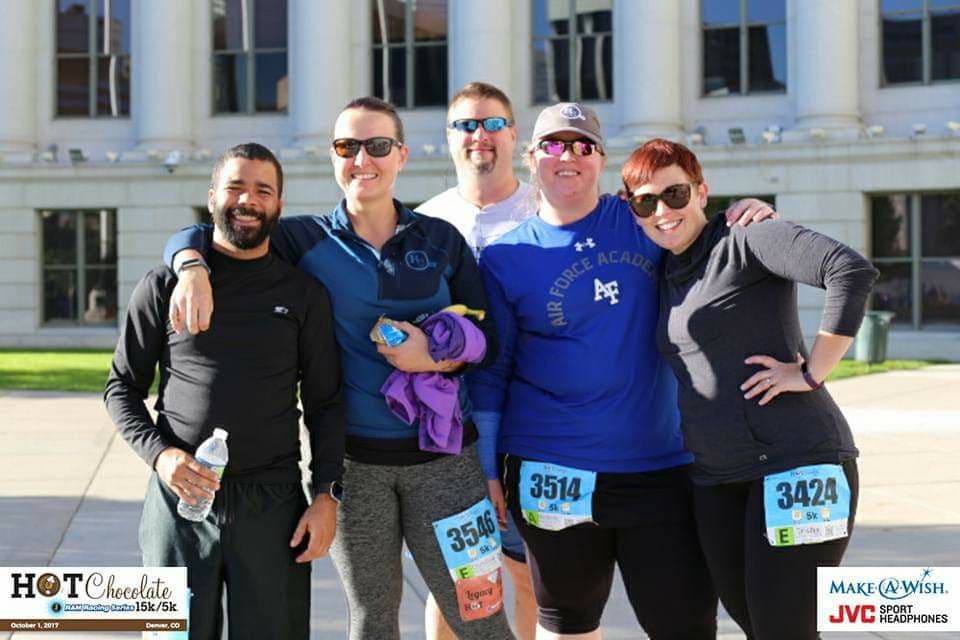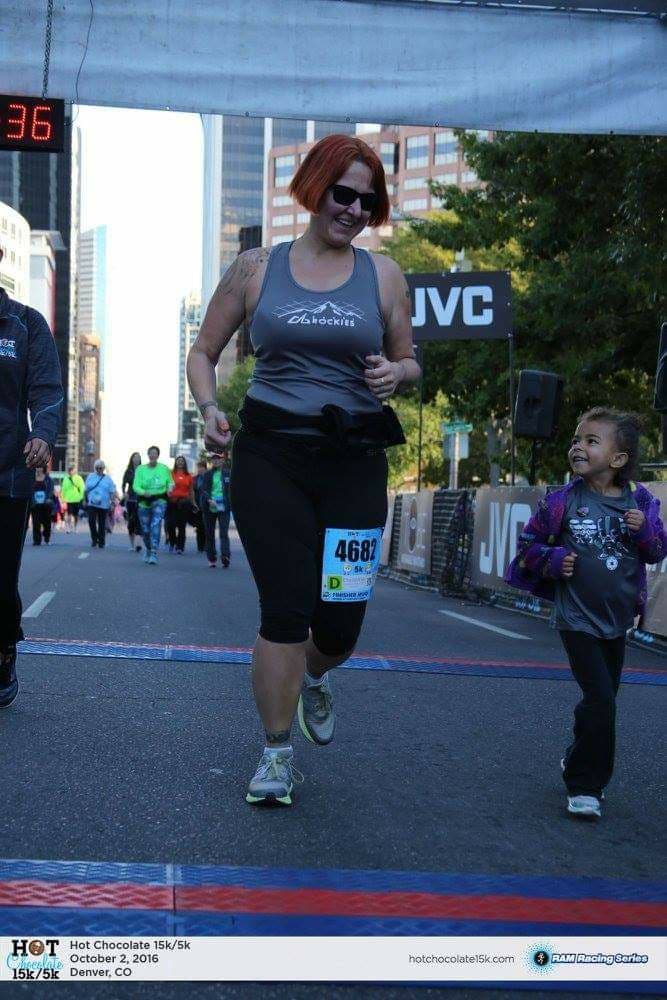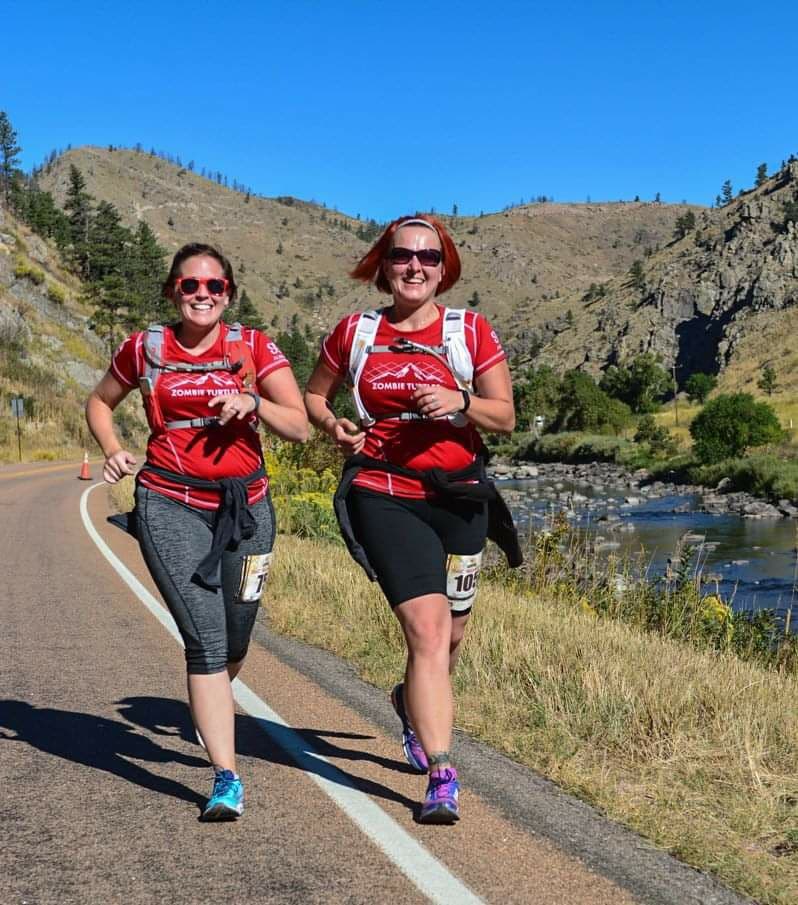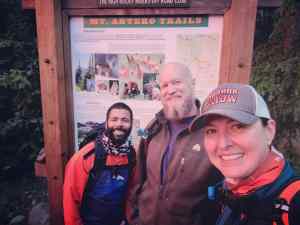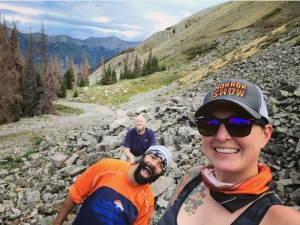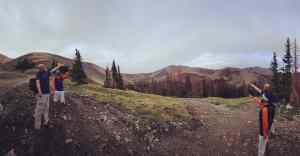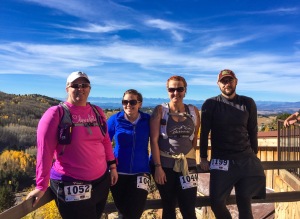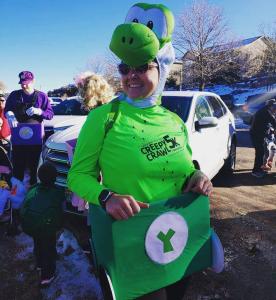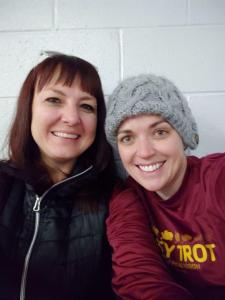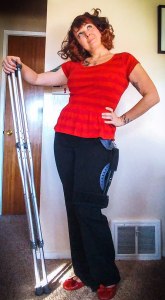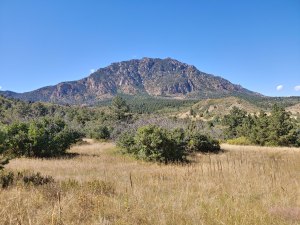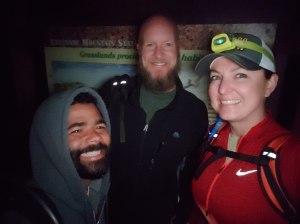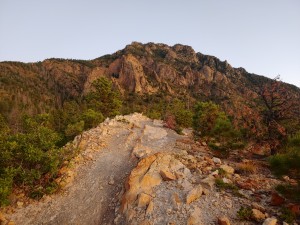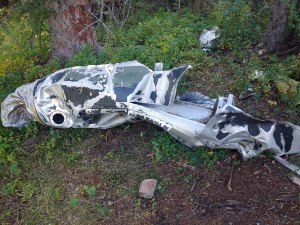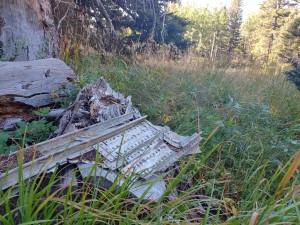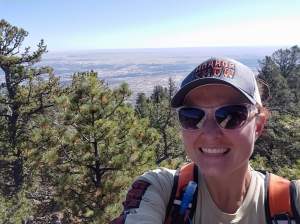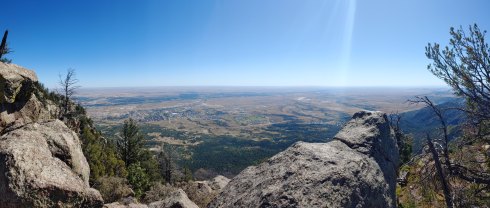(I know I said I was giving up and decommissioning this blog, but you didn’t really believe me… did you? You didn’t think I wouldn’t find my way back to running… did you?)
You were a runner. You might not have been fast, but running was always where you went to find your balance and sanity. Running was the invisible tape that was holding your house-of-cards life together. Until you were injured and running was no longer an option. Now you’re just lost, 20 pounds heavier, miserable, with a heart full of resentment at the running mates who went on like you never started with them.
That is where we left me when I closed this blog and receded into depression. And it was a dark sea where old monsters came up from the depths to bite at me without my life raft. Paired with real life stress and lingering pandemic life and all that, simply put, just a mess.
But I am a stubborn bitch. I spent disproportionate chunks of my life miserable, and I was not returning to discontentment if I have any control over the situation. I was not going to let a little tear in my lip unravel my life (because even just typing it is ridiculous). I searched for an alternative. I tried other cardio (as pandemic restrictions would allow), but nothing got me the float, high, or balance I was after.
When I got to the point of looking into machines to facilitate or simulate running, I discovered the ElliptiGO. Rather than shackle myself to a stationary elliptical in front of a screen in my house (which I did after having my first child), the ElliptiGO is a bike that allows me ride to outside, even down some of my old running routes.
I researched (obsessively) and test rode and saved and ordered and waited for restock. I finally got my ElliptiGO in the mail one month ago, four months after giving up running.
It is truly a bizarre-looking contraption. It almost looks like a bike yet with the rider lifted high, pedalling and pumping with no seat. When my children ride behind me, they say, “you look like you’re running on the air!”
I have not ridden a bike since I was perhaps a teenager. I hate them, mostly due to the seat. Hence why I adamantly rejected the idea and mere suggestion of replacing running with cycling. Yet that made my learning curve a bit steeper.
The ElliptiGO is not difficult to ride, though it is challenging to mount and get going. There is hopping and wobbling involved. My first week resulted in A LOT of bruises.
My first ride was intoxicating and terrifying. Due to my lack of cycling experience, the speed and riding in traffic were extremely unnerving. Yet both of those things paired with how high I rode on the ElliptiGO was frightening at first. My hands clutched the handlebars to white knuckle on my first ride, and toward the end, I had to dismount because my adrenaline was raging.
Yet I acclimated quickly. Each ride became more familiar. The fear was steadily replaced by comfort and enjoyment. Once I wasn’t worried about falling or being hit by a car, I could focus on how much it did feel like running, how my heart pounded in my chest and my mind utterly cleared.
I had to relearn things. I had to remind myself how to breath when “running”. I had to learn how to gauge my new speed. I had to find trails that would not make me an asshole to charge down on a bike.
Yet, almost immediately, there I was: back to “running”. After enough miles, on a long enough stretch, pumping my legs hard enough, I forget about the bike beneath me. Hell, I forget my body entirely. I am simply running. It is a float I know all too well.
I start out thinking the run (ride) is too easy and not going to be long enough; then I actually start to feel it, hate my life, and question all my life decisions; then I think I won’t be able to make it; then I want to die; then I hit that float; then I sprint to euphoria and the high on the other side when I’m done. It is running…on wheels.
And my hip does not object. (I don’t want to jinx it but) my hip feels better than it has since the pain resurfaced last summer. I can ride hard for over an hour, and my hip reacts as if I have been lounging on the couch all morning. The impact-less movement actually seems to have helped. I had more pain and stiffness before I got the ElliptiGO, even with dancing and stretching.
This might be a trap (I trust nothing when it comes to this injury anymore), but it seems like I have found my replacement. My hip feels better; my head feels better. I can function again physically and mentally. Fragile balance restored.
So beyond saying “I’m back, bitches!” here are the answers to some of the questions I keep getting about my weird little contraption.
ElliptiGO Q&A
Is it like running?
Surprisingly, it is EXACTLY like running. Once all the bike-ness becomes comfortable, the experience is running, enabled by the machine. I can now “run” much faster and farther than I ever could on my own feet. My hip and body are are also significantly less sore without all the impact.
Is it like riding a bike?
It does not share the bike riding characteristics I hate. Read: the seat. However, the handlebars and steering are very similar. Also, street riding and all traffic rules are the same as bike riding.
Is it scary?
I was terrified at first, mostly by the height. The speed and the unfamiliarity of road riding were amplified by also being so high in the air. Yet most of the fright was due to the newness and faded as the experience wore grooves in my mind.
Is it hard?
In my limited experience, it depends on the ride. You absolutely can make it difficult and rigorous exercise. I would say that versus running, going uphill is more challenging because you must also propel the weight of the bike uphill and fight the wheels wanting to roll downhill. Yet conversely, downhill is infinitely easier as you can just coast and let the bike do the work.
Do you cheat and coast?
Fuck yeah, I do. I suffered to get here. Not only did I pump my legs to heave myself and the device up the hill, I went through injury and pain and suffering and hopelessness and frustration to find my place back on the trail. So I let the wind whip through my helmet at a speed my body is not at all accustomed to and I smile for that brief second.
Do people look at you funny?
Yes! I might as well be riding a unicycle down the road for how strangely people stare at me.
Have you almost been hit by a car?
In my single month, I have had a couple close calls already. I also narrowly missed clipping a pedestrian.
